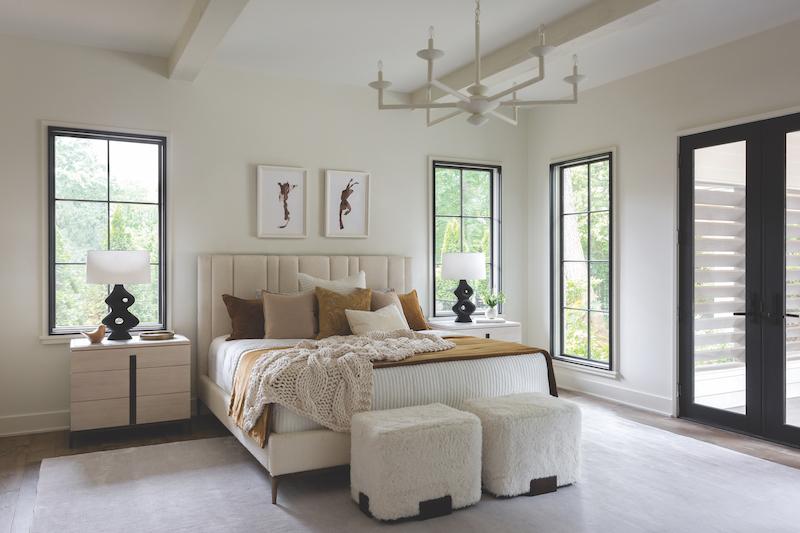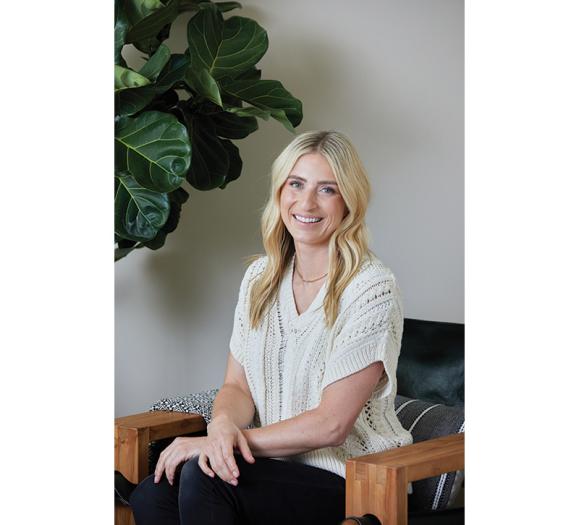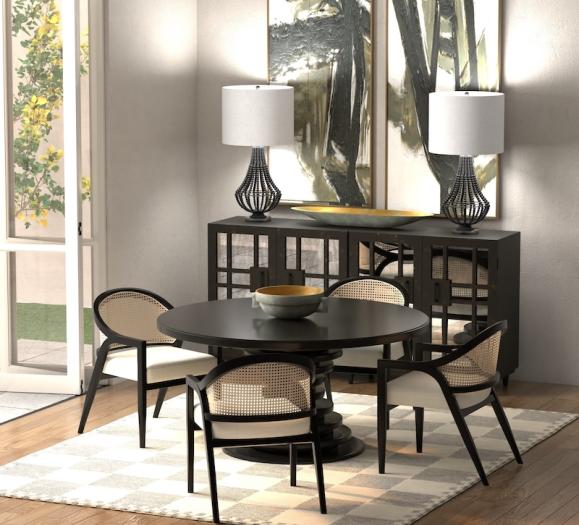Need a category refresh? A new aesthetic? A new look to a showroom? A marketing partner? For home furnishings vendors, that can often be accomplished by collaborating with an interior designer, an iconic brand or even a celebrity.
“New” is the name of the game when it comes to market introductions, and these partnerships can expand product direction as well as customer base when done right.
For designers, having a licensed collection with a supplier helps to expand their visibility and design credibility. If a designer can produce an exemplary furniture, lighting or home accessories collection — or a more comprehensive lifestyle aesthetic — what could they do with a whole home? For vendors, working with designers also expands creativity as well as credibility.
“The partnerships often bring a fresh grouping of product that expands who we are while staying true to our aesthetic,” says Pamela Cain, President of Chelsea House. “It might be inspirations from a designer’s travels, products they feel are missing in the marketplace or pieces that just bring them joy.”
Chelsea House works with a wide variety of designers, including Jamie Merida, Shayla Copas and Kristi Nelson, among others. The company most recently announced a design partnership with Lisa Kahn to develop a Sanctuary collection, which will debut at October High Point Market. Each new licensed brand they develop allows the company to showcase new aesthetics, which could resonate with customers who wouldn’t have otherwise been aligned with the brand.
At Universal Furniture, Senior Vice President of Marketing Neil McKenzie, adds that the designers they work with — most recently Nina Magon and Erinn Valencich — bring fresh perspectives and styles to the Universal brand. For example, Nina Magon brought a European aesthetic to the Universal portfolio, while Valencich has helped the company to expand beyond its traditional materials, as her collection encompasses
26 finishes.
“When on brand and consistent with what the partner is doing in their world, the partnership gives us credibility in that category,” McKenzie says. “Erinn, for example, does very custom, high-end and more bespoke furnishings. Our partnership allows us to venture into her world, but at a more approachable price point.”
Interior Designer Dann Foley is the latest designer to work with Stylecraft, a multi-category home furnishings supplier that offers lighting, art, accessories and now furniture, including upholstery, as a result of its collaboration with Foley. (Learn more about Foley on page 18). Foley’s licensing deal with Stylecraft comes with hundreds of skus he’s created for them. Within his collection, he’s added categories for Stylecraft that they hadn’t had before. Decorative pillows, for example, are one of Foley’s best-selling categories and not one that Stylecraft had been in before.
Personality Through Product
With this partnership, Foley is also merchandising his collection and the showroom to give it more of a designer appeal, and connect Stylecraft from a design standpoint with its sister brand, Harp & Finial. “I was brought in to create a true bridge between Stylecraft and Harp & Finial,” Foley says. “That’s the biggest change that was created. I’m connecting style from one side to the other.”
Harp & Finial has traditionally been the designer brand, with Stylecraft offering more accessible
price points.
“Stylecraft has some beautiful lamps and furniture pieces. I want people to see that. It’s always been a value brand, but customers need to see the style as well,” he adds. Foley’s design aesthetic adds that “style” to a brand that might not have been considered for high style before. While Foley has been licensing collections for more than a decade, he says that working with Stylecraft has really given him an opportunity to showcase his aesthetic.
Beyond product, Foley brings customers to the table. A prolific marketer, he works hard with Stylecraft to ensure his collection resonates with the company’s current customer and attracts new buyers as well. “My value is my ability to bring people through the door,” Foley says of his marketing role with Stylecraft. He understands that his role as a licensed designer with the company doesn’t end when the product rolls out. He’s at markets to support sales staff and interact with customers, he handles much of the merchandising within the showrooms, and he shares his collaboration out in the real world as well. “The most important part of what I do is just showing up. Stylecraft promotes me, which is fun and flattering. And people want you there. That excites them,” Foley says. “People want the personality; they want to buy and sell it. I talk them through the product and my inspirations.” Even if buyers don’t know Foley when they come in, they are opening new accounts because he can answer their questions. “I recognize that my job is to sell product and support the sales staff. My job is about representing the brand, both my brand and my licensing partner’s brand.”
Having an expanded marketing presence through a designer or celebrity brand helps companies to reach new demographics, especially if a name is recognizable. However, even with a less well-known designer, they typically have a following, and suppliers will see an uptick in traffic when hosting market launch events or even just with the designer presence in the showroom. As Foley mentions, his job is to sell the product. No one knows the story behind a piece, a collection or a style more than the designer who’s created it.
“From a marketing perspective, it’s always a home run,” Chelsea House’s Cain says in reference to the company’s designer partnerships. “It gives us a focus, especially for markets and provides us the opportunity to feature and celebrate the designer and their work. A launch might only have 30 to 50 pieces of the 250 we introduce at a market, but the excitement surrounding that launch brings buyers in to see our entire line.”
Universal’s McKenzie adds that with its designer partnerships, Universal sees a segment of customers who come into the building to specifically see a designer, such as Valencich. “We’ve seen growth from a traffic standpoint at market — we’re able to introduce ourselves [Universal Furniture] to new people,” he says. “We can sell these collections at retail too, and when the retailers make that investment, it perpetuates business.”
Universal Furniture also has licensing partnerships with Coastal Living — a new collection will debut at October High Point Market — and Miranda Kerr. Coastal Living is an iconic media brand and Miranda Kerr appeals to a specific customer looking for a fashion-forward approach to product. While those brands also brings in new customers and business, designers bring strong aesthetic opinions and a sense of authority to the table as well.
Whether to accelerate category and aesthetic growth or to have a story and face to put with a new collection, collaborating with designers has breathed new life into many home furnishing’s suppliers product development and brand reach. There is a lot that goes into these partnerships, and both parties need to be sure they protect their interests. When
they work, as they often do, it’s a win-win for all involved, including the customers.







